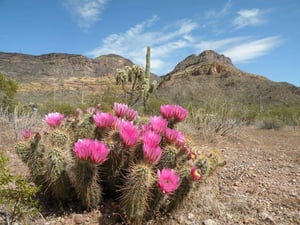Is it possible to collect water directly from air in the planet most arid places, to at least partially compensate for water scarcity, imitating the “strategies” of survival of cacti and other succulents? Yes, according to researchers at the Department of Chemistry of the University of California, Berkeley (US), who published in Science Advances journal the results obtained with a state-of-the-art equipment, tested in the Arizona desert. Relative humidity goes from 40 percent at night to only 8 percent during the day. Researchers used a “machine” based on the MOF (Metallic Organic Framework) technology and employ the use of treated metals in an innovative way to absorb the maximum possible amount of humidity in the air and retain it, then turning it into water. In particular, the “tested” prototype in Arizona is called MOF 801 and has an internal zirconium surface, allowing obtaining a water deciliter during the day/night cycle (half of a medium glass) for each kilogram of MOF. Sunlight is the only energy source. But a more advanced version of this device, called MOF 303, applying aluminum instead of zirconium, appears able to obtain (in lab tests) twice the amount: about 2 water deciliters per day for each kilogram of equipment.
The secret of MOF lies in the internal surface “geometry”, made of microscopic pores and micro-channels that can enormously expand the total area where the air water droplets are conveyed.
Currently, several research institutes and companies in the world are developing this type of equipment, given the growing water shortage and global warming, but the model developed by the Californian researchers seems to be one of the most efficient. The MOF 303, in particular, is also lighter and much cheaper, up to 150 times cheaper weight-wise, compared to other similar equipment, such as MOF 801. Future tests will be conducted by Californian researchers in Death Valley, one of the driest areas of the Earth, where even at night humidity does not exceed 25%.

